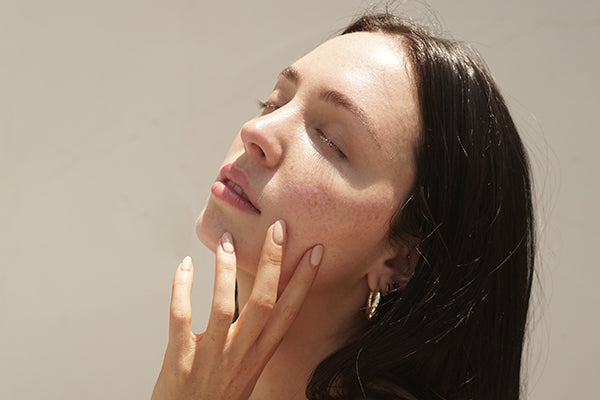How to minimise the appearance of acne scarring

If you have ever experienced acne, blemishes and breakouts, dealing with post-blemish scarring can be frustrating. So, what is the best way to reduce the appearance of these marks?
What causes scarring?
Scars are formed when tissue in the lower layers of the skin is damaged. When there is an injury to the skin, either through picking, squeezing or simply the pressure of an inflamed blemish, this sets off a chain reaction known as the wound healing response. This begins with blood clotting to seal the wound and then the immune system creates inflammation to fight infection. The skin works to repair itself, producing dermal proteins such as collagen and other substances needed to heal the scar.
What are the different types of acne scarring?
Discolouration, although not technically scarring, more a temporary skin condition, is the most common type of post-blemish marking and can remain even after a blemish has completely healed. This type of scarring responds well to topical treatment and can often fade completely with minimal intervention.
Atrophic scarring, also known as pitted, icepick or indented scarring – is when the scar sits below the surrounding skin and forms when the skin does not produce enough collagen to regenerate correctly as the wound is healing. This type of scarring can occur with inflammatory conditions such as acne as well as other inflammatory conditions like chicken pox and whilst the appearance can sometimes be minimised with skincare, this type of scarring requires consultation and treatment with a dermatologist or cosmetic surgeon to correct.
Hypertrophic scarring is when the scar sits above the surrounding skin and forms when the skin produces too much collagen during the wound healing phase. Hypertrophic scars may flatten over time or require medical intervention to correct.
What products can help reduce the appearance of post-blemish scarring?
SPF
Trauma to the skin can trigger the production of melanin which can pool at the site of injury creating what is commonly known as post-inflammatory hyperpigmentation. This type of post acne scarring can darken rapidly when exposed to UV light particularly in those with melanin-rich skin and medium to deeper skin tones. In addition, UV light contributes to the degradation of collagen and elastin, vital substances needed for healthy skin repair. We therefore recommend applying SPF daily. Protection Plus SPF 50+ offers a slight natural blurring effect from the antioxidant Pine Bark Extract it contains helping to minimise the appearance of post-blemish marking and blends naturally for all skin tones.
Vitamin E
Ingredients that are clinically proven to act as antioxidants, helping to preserve the integrity of scar healing proteins such as collagen and reduce the appearance of redness should be in any good routine aiming to minimise scarring. One of our favourite such ingredients is Vital ET™, a new and unique bio-functional form of Vitamin E, found in our Vitamin E Serum. This soothing serum also contains Ceramides that work to replenish and strengthen the skins natural barrier and can be applied morning or evening for all skin types including oily or sensitive.
Acids
It is best to avoid exfoliating while the skin is still in its healing phase and always avoid scrubbing the skin or using harsh exfoliants that can potentially disturb weakened scar tissue. Chemical exfoliants are preferred over physical if you have post-blemish scarring and pink, red, or purple scaring can mean the underlying tissues are still in repair mode which can take a minimum of 4-6 weeks to complete.
Alpha Hydroxy Acids (AHAs) like Glycolic Acid exfoliate the outer layer of the skin helping to make post-blemish scars less noticeable over time by assisting in fading discolouration and smoothing uneven texture. Try Liquid Gold three alternate evenings a week to help to accelerate your skin renewal process.
For those with oily skin, Beta Hydroxy Acids (BHAs), which are oil soluble work best. Clear Skin Tonic applied alternate evenings contains Salicylic Acid, which can help to reduce the appearance of post-blemish scarring and diffuse the appearance of redness.
Retinol
Retinol can help to improve skin texture and reduce the appearance of any discolouration helping to make scarring appear less visible. Start with a gentle entry level product like Vitamin A Serum on alternate evenings, and for those more experienced with active treatments try Midnight Reboot Serum which contains both AHA Glycolic Acid and Granactive Retinoid (a more modern form of Vitamin A).
Barrier protection
The health of the skin barrier is a major player in the wound healing process. The skin barrier is the first line of defence against factors that harm the skin, keeping pathogens and harmful bacteria out whilst at the same time keeping vital substances like water and essential lipids like fatty acids and ceramides in. These natural fats function like mortar to bind the skin cells together, keeping skin healthy, resilient and better armed to repair itself post injury. To help protect and fortify your skin barrier we suggest Golden Haze Face Oil.

